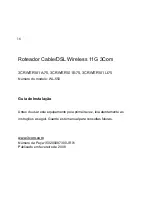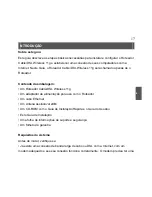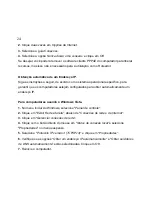
Dynamic IP addressing (or DHCP) automatically assigns the Router IP information. This
method is popular with Cable providers. This method is also used if your modem has a
built in DHCP server.
2. PPPoE (DSL only)
If the installation instructions that accompany your modem ask you to install a PPPoE
client on your PC then select this option. Note that when you install the Router, you will
not need to use the PPPoE software on your PC. To configure the Router you will need
to know the following: Username, Password, and Service Name (if required by your ISP).
3. Static IP Address (DSL or Cable)
The ISP provides the IP addressing information for you to enter manually. To configure
the Router you will need to know the following:
4. PPTP (DSL or Cable)
PPTP is only used by some European providers. If the installation instructions that
accompany your modem ask you to setup a dialup connection using a PPTP VPN tunnel
then select this option. Note that when you install the Router, you will not need to use the
dialup VPN on your PC anymore. To configure the Router you will need to know the
following: Username, Password, Service Name (if required by your ISP), and VPN
Server address (usually your modem).
You will be asked for the IP Allocation Mode when you run the Setup Wizard.
10













































